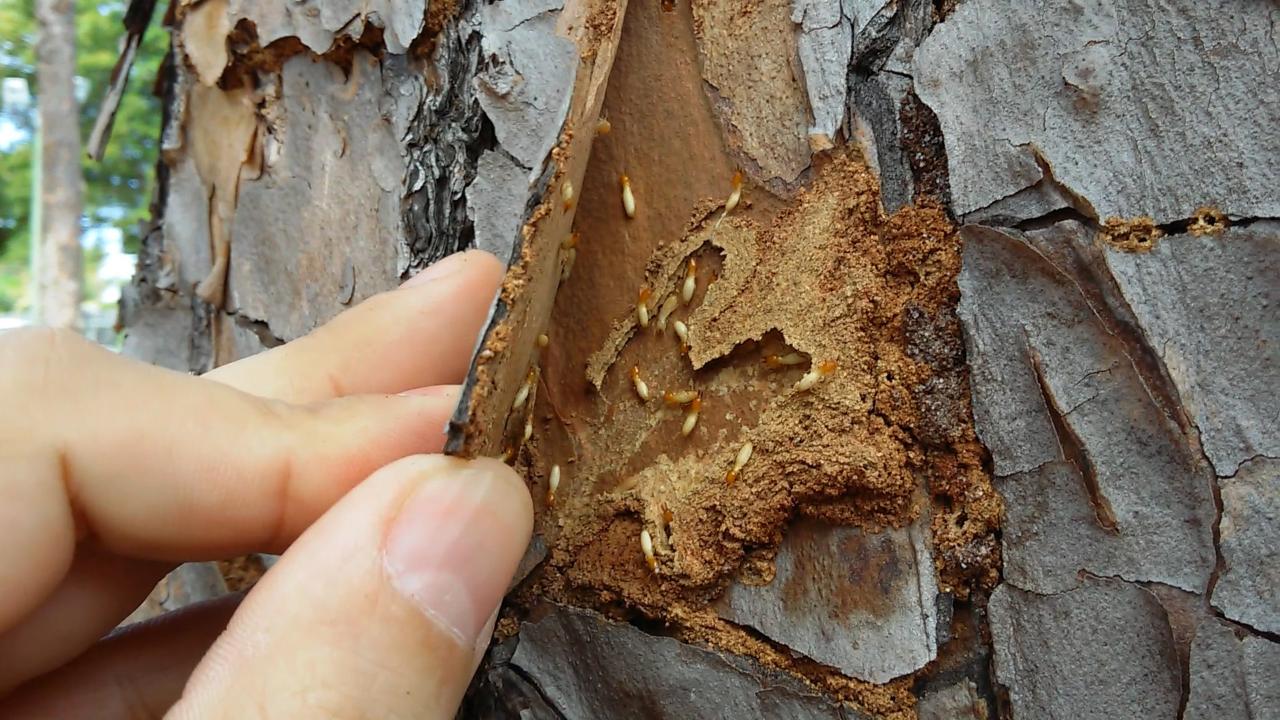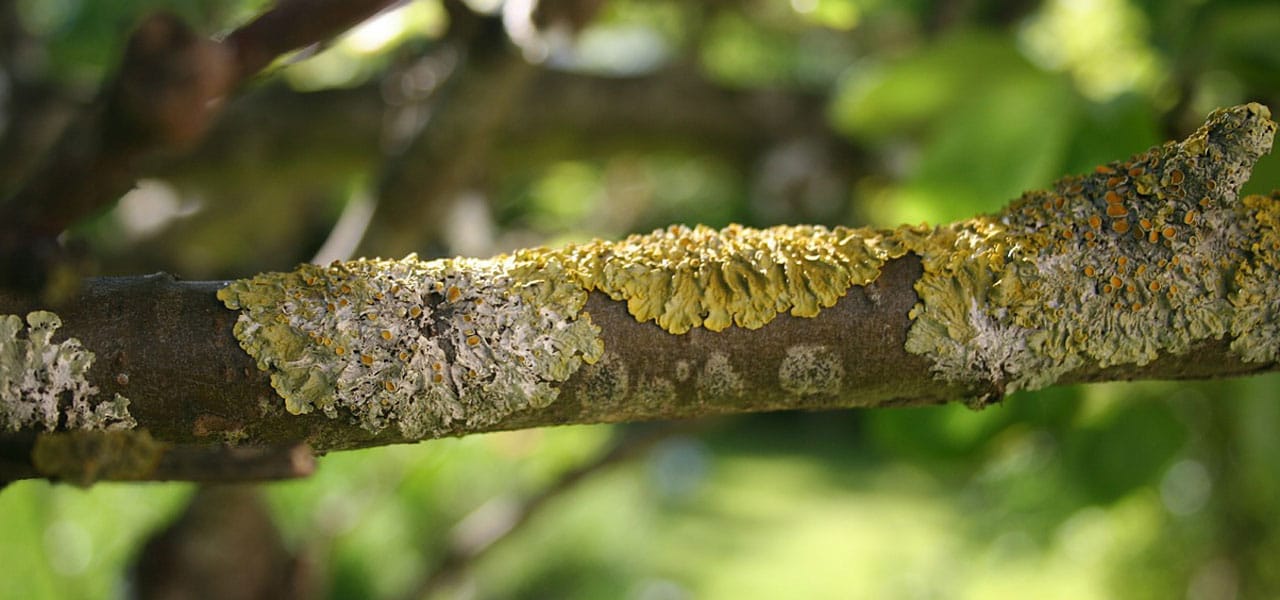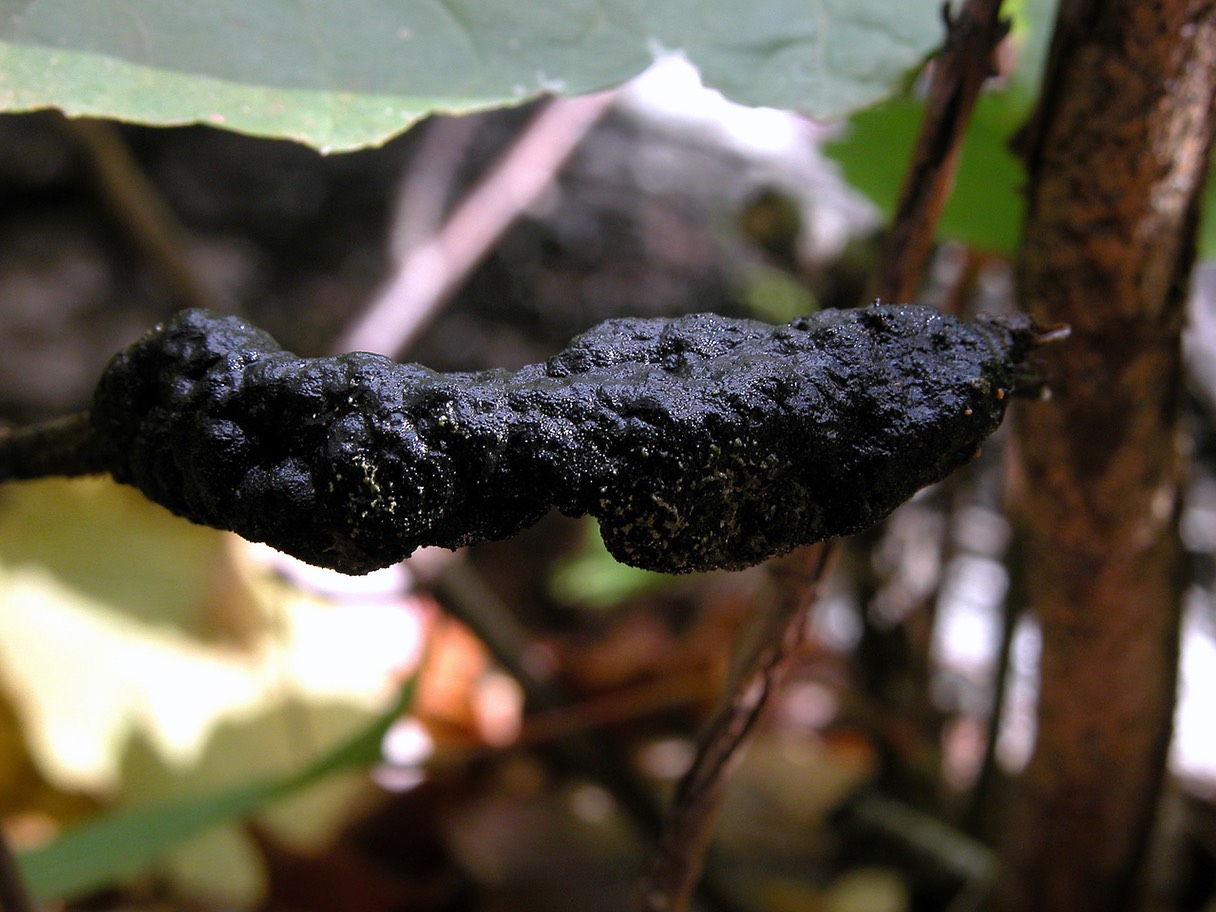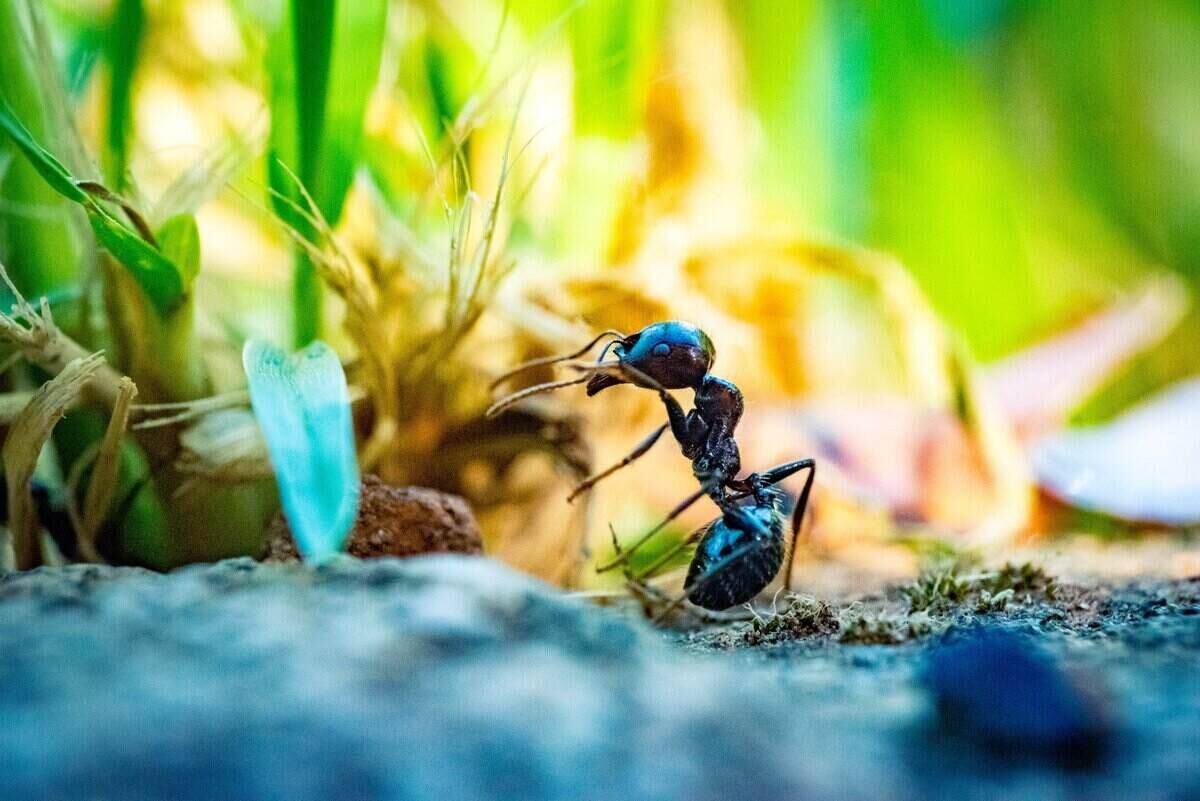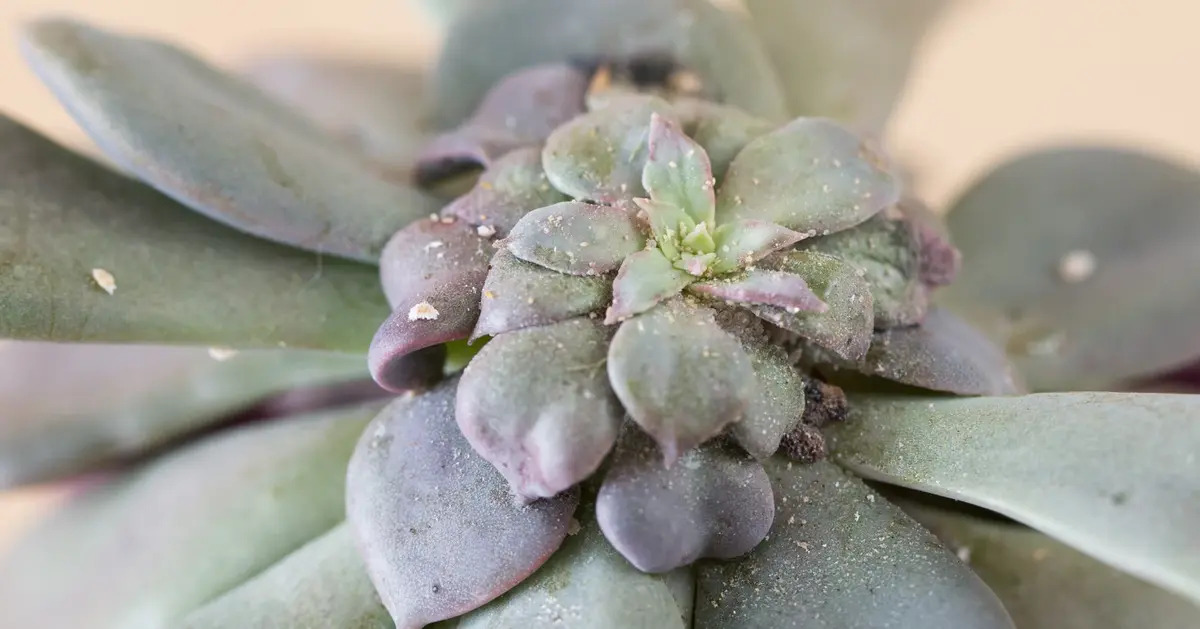Home>Gardening Tips and Tricks>Problem Solving>How To Get Rid Of Ants In Trees


Problem Solving
How To Get Rid Of Ants In Trees
Published: November 8, 2023
Looking for effective ways of problem solving? Learn how to get rid of ants in trees with our expert tips and solutions. Say goodbye to ant infestations for good!
(Many of the links in this article redirect to a specific reviewed product. Your purchase of these products through affiliate links helps to generate commission for Chicagolandgardening.com, at no extra cost. Learn more)
Table of Contents
- Introduction
- Understanding the Behavior of Ants in Trees
- Identifying the Type of Ants Infesting Trees
- Natural Methods to Get Rid of Ants in Trees
- Pruning Infested Branches
- Creating Physical Barriers
- Using Natural Repellents
- Removing Attractive Food Sources
- Chemical Solutions for Eliminating Ants in Trees
- Important Precautions and Safety Measures
- Conclusion
Introduction
Welcome to our guide on how to get rid of ants in trees. Ants can be a common nuisance in our homes and gardens, but when they start infesting our trees, it can cause serious damage to the health and vitality of these majestic plants. Ants are attracted to trees for various reasons – seeking shelter, food sources like aphids, or even using the trees as bridges to access other parts of your property.
It’s important to address ant infestations in trees promptly to protect their well-being and prevent further damage. In this article, we will explore effective natural and chemical methods to eliminate ants in trees while keeping the environment and tree health in mind.
Understanding the behavior of ants in trees is crucial in developing an effective ant management plan. Ants are social insects organized into colonies with complex communication systems. They have a hierarchy with different castes, each with specific roles and responsibilities.
Ants play essential ecological roles such as seed dispersal and soil aeration, but they can also cause harm when they disrupt the natural balance of a tree. They can tunnel through the bark, causing wounds that weaken the tree’s defenses against diseases and pathogens. Additionally, some ant species cultivate and protect plant-sucking insects like aphids, which can further damage the tree by depriving it of vital nutrients.
Identifying the type of ants infesting your trees is crucial for implementing the most appropriate control measures. Different ant species have different behaviors and habits that can impact their management strategies. Some common ant species that infest trees include carpenter ants, pavement ants, and Argentine ants.
In the following sections, we will delve into natural methods to get rid of ants in trees. These methods are environmentally friendly and can help maintain the health and balance of your garden ecosystem. We will also discuss chemical solutions for more severe cases, but we always recommend trying natural alternatives first.
Remember, it’s important to take precautions and safety measures when dealing with ant infestations in trees. Properly identifying the type of ants, understanding their behavior, and following recommended application methods will ensure effective control without endangering the tree, other plants, or the environment.
So let’s dive in and explore the various strategies and techniques to eliminate ants in trees and restore the health and beauty of your outdoor space!
Understanding the Behavior of Ants in Trees
Before we discuss the methods to get rid of ants in trees, it is important to understand their behavior. Ants are social insects that live in colonies and have a division of labor among the members. Each ant has a specific role to play within the colony, which can vary from foraging for food to defending the nest.
When ants infest trees, they typically do so for several reasons. One common reason is seeking shelter. Trees, with their dense foliage and sturdy branches, provide a secure habitat for ants to establish their nests. Ant colonies may build their nests in tree crevices, cavities, or hollow branches, making it difficult to detect their presence.
Another reason ants are attracted to trees is for food sources. Some ant species have a symbiotic relationship with other insect pests such as aphids, scale insects, or mealybugs. These ants protect these pests in exchange for a sugary substance known as honeydew, which is excreted by the insects. Ants will climb up and down the trees to tend to these pests, protecting them from predators and harvesting the honeydew they produce.
In addition to using trees as a source of shelter and food, ants may also use trees as bridges to access other areas of your property. They can use the branches to connect two separate structures, allowing them to easily travel from trees to your home or garden.
Understanding the behavior of ants in trees will help determine the most effective strategies to eliminate them. For example, if the ant infestation is solely due to a neighboring aphid population, targeting and controlling the aphids may reduce the ant presence. On the other hand, if the ants have established a nest in the tree, more direct methods may be required.
In the next sections, we will explore different natural and chemical methods to eliminate ants in trees. From pruning infested branches to creating physical barriers and using natural repellents, there are various techniques you can employ to regain control of your trees and prevent future ant infestations.
Remember, implementing ant control methods in trees should be done in a way that minimizes harm to the tree’s health and the environment. With a good understanding of ant behavior and careful application of control measures, you can successfully manage ant infestations and ensure the well-being of your trees.
Identifying the Type of Ants Infesting Trees
Before implementing control measures, it is important to identify the type of ants infesting your trees. Different ant species have varying behaviors and habits, which can impact the effectiveness of management strategies.
Here are a few common ant species that are known to infest trees:
- Carpenter ants: Carpenter ants are large ants that are attracted to decaying, moist wood. They do not consume wood but excavate it to create nests. Infestations of carpenter ants can weaken tree branches or trunks, potentially leading to structural damage.
- Pavement ants: Pavement ants are small, dark ants commonly found nesting under sidewalks, driveways, or tree roots. They can opportunistically infest trees near their nesting sites, causing minor damage.
- Argentine ants: Argentine ants are small, brown ants that form extensive colonies. They are highly adaptable and can form supercolonies that span long distances, including trees. They are attracted to sweet substances and tend aphids and other honeydew-producing insects.
Identifying the ant species infesting your trees can help determine the appropriate control measures. You can observe the ants closely or seek professional help from an entomologist or pest control expert for accurate identification.
Monitoring ant trails can provide valuable insights into the ant behavior. Follow their path from the tree to their entry point or nest to gain a better understanding of their movement. You can also examine the nests for identifying characteristics, such as the appearance of wood shavings or debris near the entrance, which may indicate carpenter ant activity.
Another useful method is the use of ant baits. Placing different types of ant baits near the infested tree can help identify the ant species that are most attracted to each bait. This can assist in narrowing down the specific ant species causing the infestation.
Once you have identified the type of ants infesting your trees, you can tailor your control strategies accordingly. For example, if you have carpenter ants, focusing on locating and treating their nests may be necessary. In the case of Argentine ants, targeting and controlling the honeydew-producing insects they tend to may help reduce their presence in the tree.
Remember, accurate identification of the ant species is crucial for effective management. If you are unsure about the identification or need assistance, consult with a professional to ensure the most appropriate measures are taken.
Natural Methods to Get Rid of Ants in Trees
When dealing with ant infestations in trees, it is often best to start with natural methods before considering chemical solutions. Natural methods help preserve the health of the tree and minimize any potential harm to beneficial insects and the environment. Here are some effective natural methods to get rid of ants in trees:
- Pruning Infested Branches: One of the first steps in ant control is to prune infested branches. Look for signs of ant activity, such as ant trails, nests, or aphid colonies, on various parts of the tree. Prune the affected branches, ensuring that you make clean cuts to minimize tree stress and prevent the spread of ants to other areas.
- Creating Physical Barriers: Physical barriers can prevent ants from accessing trees. Wrap sticky bands or double-sided tape around the trunk to stop ants from climbing up. This method is especially effective against crawling ants like carpenter ants. Make sure to apply the barrier in a band that is wide enough to prevent the ants from bypassing it.
- Using Natural Repellents: Certain natural repellents can deter ants from infesting trees. Sprinkle powdered substances like cinnamon, cayenne pepper, or diatomaceous earth around the tree base or the areas where ants are active. These substances create a barrier that ants do not like to cross. You can also use essential oils like peppermint, citrus, or tea tree oil mixed with water in a spray bottle to repel ants. Apply these repellents regularly for better effectiveness.
- Removing Attractive Food Sources: Ants are often attracted to honeydew-producing insects like aphids, mealybugs, or scale insects. Removing these pests with natural methods like spraying a mixture of water and dish soap or introducing beneficial predators like ladybugs can eliminate the food source, making the tree less appealing to the ants.
Implementing these natural methods can help control ant populations in trees effectively. However, it’s important to note that natural solutions may take time to show results. Consistent and regular application of these methods may be needed to achieve the desired outcome.
If the infestation persists despite your best natural efforts or if the situation is severe, it may be necessary to consider chemical solutions. However, always follow label instructions and consider non-toxic options whenever possible to minimize the impact on the environment and tree health.
Pruning Infested Branches
One effective natural method to control ant infestations in trees is by pruning infested branches. Pruning not only helps remove the ants but also eliminates any associated factors that may attract them, such as aphid colonies or honeydew-producing insects. Here’s how you can effectively prune infested branches:
1. Identify the infested branches: Observe the tree closely and look for signs of ant activity, such as ant trails, nests, or the presence of honeydew-producing insects like aphids or scale insects. Infested branches may also show signs of wood decay or weakened areas.
2. Prepare the pruning tools: Ensure you have the necessary tools, including a pruning saw or shears, pruning loppers, and safety equipment such as gloves and goggles. Keeping your tools clean and sharp will make the pruning process easier and minimize the risk of damage to the tree.
3. Make precise cuts: Carefully prune the infested branches, making clean and precise cuts to minimize stress on the tree and to prevent further spreading of ants. Cut the branches back to the main trunk or a healthy lateral branch, using the appropriate pruning technique for the tree species.
4. Dispose of pruned branches: It is important to properly dispose of the pruned branches to prevent re-infestation. Remove the pruned branches from the immediate vicinity of the tree, as ants could use them as bridges to access the tree again.
5. Monitor and repeat if necessary: After pruning, closely monitor the tree for any signs of re-infestation. If new ant activity or honeydew-producing insects are detected, repeat the pruning process as necessary. Regular monitoring and maintenance are key to keeping the tree free from ant infestations.
Pruning infested branches not only helps eliminate ants but also promotes the overall health of the tree. It allows for better air circulation, improved sunlight exposure, and removes any dead or diseased wood. However, it is essential to prune with caution, considering the specific needs and growth patterns of the tree species to avoid excessive pruning or damaging the tree’s structure.
In addition to pruning, it is recommended to combine this method with other natural ant control techniques, such as creating physical barriers or using natural repellents, to achieve optimal results. By implementing these natural methods consistently and effectively, you can successfully eliminate ant infestations in trees and promote a healthier environment.
Creating Physical Barriers
Creating physical barriers is an effective natural method to prevent ants from infesting trees. These barriers act as deterrents, preventing ants from climbing up the tree and accessing its foliage or branches. Here’s how you can create physical barriers to keep ants at bay:
1. Sticky bands or tape: Wrap sticky bands or double-sided tape around the trunk of the tree. The sticky surface prevents ants from crawling up the tree and accessing its branches and foliage. Ensure that the sticky band or tape is wide enough to create an effective barrier and completely encircle the tree trunk.
2. Petroleum jelly or grease: Apply a thick layer of petroleum jelly or grease around the base of the tree. Ants find it challenging to crawl over these slippery substances, making it difficult for them to reach the tree. Reapply the jelly or grease as needed, especially after rain or heavy winds that may wash it away.
3. Barrier materials: Use physical materials as barriers to prevent ants from climbing up the tree. Examples include bands of copper tape, which the ants find uncomfortable to cross, or rough materials like horticultural sand or diatomaceous earth sprinkled around the base of the tree. These materials create a barrier that ants are reluctant to cross.
4. Prune away contact points: Trim back any tree branches or vegetation that touch walls, fences, or other structures. Ants can use these pathways to access the tree from nearby structures, so removing them creates a gap that ants must overcome to reach the tree.
5. Monitor and maintain: Regularly inspect the barriers to ensure they remain intact and effective. Check for any gaps or areas where ants may have found a way through. Repair or reinforce the barriers as needed to maintain their effectiveness in preventing ant infestations.
Creating physical barriers is a proactive approach to ant control that helps protect your trees from infestation. However, it is important to remember that physical barriers are not a foolproof solution, as some determined ant species may find alternative routes to bypass the barriers. Therefore, combining physical barriers with other natural control methods, such as pruning infested branches or using natural repellents, can further enhance the effectiveness of ant management in trees.
By implementing physical barriers and consistently maintaining them, you can create an environment that discourages ants from infesting your trees. This not only helps preserve the health and beauty of your trees but also minimizes the risk of ants spreading to other areas of your property.
Using Natural Repellents
Using natural repellents is an effective and environmentally-friendly method to deter ants from infesting trees. Natural repellents create a barrier or unpleasant environment that ants will try to avoid, helping to protect your trees and prevent ant infestations. Here are several natural repellents you can use:
1. Cinnamon: Ants dislike the strong smell of cinnamon. Sprinkle ground cinnamon around the base of the tree or on ant trails to discourage ants from coming near. You can also make a cinnamon spray by mixing cinnamon essential oil with water and spraying it on affected areas of the tree.
2. Cayenne Pepper: The spicy nature of cayenne pepper can deter ants. Sprinkle cayenne pepper powder near the base of the tree or in areas where ants are active. You can also mix cayenne pepper with water and dish soap to create a spray that can be applied directly to the tree.
3. Diatomaceous Earth: Diatomaceous earth is a natural substance composed of fossilized remains of diatoms. It is abrasive to ants and other crawling insects, causing damage to their exoskeletons and ultimately leading to their demise. Sprinkle diatomaceous earth around the base of the tree or in ant-infested areas while wearing protective gloves and a face mask to avoid inhaling the dust.
4. Peppermint Oil: Ants have an aversion to the strong scent of peppermint oil. Mix a few drops of peppermint essential oil with water in a spray bottle and apply it to the tree trunk or any areas where ants are active. Reapply the spray at regular intervals to maintain its repellent effect.
5. Vinegar: The strong smell of vinegar can help repel ants. Create a vinegar spray by mixing equal parts of vinegar and water in a spray bottle. Apply the spray directly onto ant trails or areas where ants are present. Vinegar can also be used to wipe down surfaces or clean ant-infested areas.
It is important to remember that natural repellents may need to be reapplied regularly to maintain their effectiveness, especially after rain or heavy watering that can wash away the repellent. Additionally, it may be necessary to test natural repellents on a small, inconspicuous area of the tree before applying them more widely to ensure that the tree does not have any adverse reactions.
Using natural repellents is a safe and eco-friendly approach to deter ants from infesting trees. By incorporating these natural methods into your ant control strategy, you can protect the health and beauty of your trees without resorting to harmful chemicals or pesticides.
Removing Attractive Food Sources
One effective natural method to get rid of ants in trees is by removing attractive food sources. Ants are often drawn to trees because they provide a stable habitat and a source of food. By eliminating these food sources, you can reduce the incentive for ants to infest your trees. Here’s how you can remove attractive food sources:
1. Control honeydew-producing insects: Many ant species have a mutualistic relationship with honeydew-producing insects like aphids, mealybugs, or scale insects. These insects secrete a sugary substance called honeydew, which ants feed upon. By controlling these pest populations, you can remove an important food source for the ants. Use natural methods such as spraying a mixture of water and dish soap on the affected areas to suffocate and remove the pests. You can also introduce natural predators like ladybugs or lacewings to control the population of honeydew-producing insects.
2. Clear away fallen fruit: If your tree produces fruit, fallen fruit on the ground can attract ants. Clean up fallen fruit promptly to prevent ants from being drawn to the tree. Consider using fruit tree netting or other methods to protect the fruit from pests and prevent excessive fruit dropping.
3. Proper waste management: Ants can be attracted to waste materials like food scraps or compost piles near trees. Ensure proper waste management by sealing waste containers tightly and keeping them away from the tree. Avoid leaving food scraps or open compost piles near the tree, as these can provide a potential food source for ants.
4. Remove excess moisture: Some ant species, like carpenter ants, are attracted to trees with damp or decaying wood. Eliminating excess moisture around the tree can help discourage these ants from infesting it. Ensure proper drainage around the tree, fix any water leaks or irrigation issues, and ensure the soil is well-drained.
5. Prune tree branches away from buildings: Ants can use branches touching buildings or other structures as a pathway to reach the tree. Prune tree branches that come into contact with structures to prevent ants from using them as bridges or entry points.
By removing attractive food sources, you make the tree less appealing to ants, reducing the likelihood of infestation. However, it’s important to note that even with the removal of food sources, ants may still be present in the surrounding environment. Therefore, it is advisable to combine the removal of attractive food sources with other natural methods, such as pruning infested branches or creating physical barriers, for more effective ant control.
By implementing these natural methods and reducing attractive food sources, you can create an environment that discourages ant infestations in your trees. This contributes to the overall health and vitality of your trees while maintaining a balanced ecosystem in your garden.
Chemical Solutions for Eliminating Ants in Trees
While natural methods are generally the preferred approach for managing ant infestations in trees, there are instances where chemical solutions may be necessary. Chemical treatments can provide quick and effective control, especially in severe infestations or situations where natural methods have proven ineffective. However, it is important to follow safety guidelines and consider the potential impact on the environment and tree health. Here are some common chemical solutions for eliminating ants in trees:
1. Insecticidal sprays: There are insecticidal sprays specifically formulated for controlling ants. These sprays often contain chemicals like pyrethroids or neonicotinoids that are toxic to ants. When using insecticidal sprays, it is important to carefully read and follow the label instructions. Apply the spray to the affected areas of the tree including ant trails, nests, and areas of high ant activity. Take precautions to avoid contact with beneficial insects, such as bees or butterflies, by avoiding spraying when they are active.
2. Ant baits: Ant baits are another commonly used chemical solution. These baits contain attractants or toxins that are ingested by worker ants and carried back to the nest, effectively killing off the colony. Place ant baits near the tree base or along ant trails, ensuring they are out of reach of children or pets. It’s important to be patient with ant baits, as it may take some time for the bait to be distributed within the colony and for the full effect to be seen.
3. Systemic insecticides: Systemic insecticides are applied to the soil or trunk of the tree and are absorbed by the roots or vascular system, making the entire tree toxic to insects feeding on it, including ants. These insecticides are usually applied by professionals and require specialized equipment. It is crucial to carefully follow the instructions provided by the manufacturer and to consider the potential impact on beneficial insects, as well as any local regulations or restrictions on their use.
When using chemical solutions, it is advisable to consult with a professional or licensed pest control operator who can offer expertise in choosing the appropriate products and applying them safely. They can also help determine whether chemical treatments are necessary or if natural methods can effectively address the ant infestation.
Remember, chemical solutions should be used as a last resort, and efforts should be made to minimize their impact on the environment and tree health. Always consider non-toxic alternatives first and ensure proper precautions are taken during application to protect yourself, beneficial insects, and the surrounding ecosystem.
By using chemical solutions responsibly and in conjunction with other management strategies, you can effectively eliminate ants in trees and restore the health and beauty of your outdoor space.
Important Precautions and Safety Measures
When dealing with ant infestations in trees, it is crucial to prioritize safety and take necessary precautions. Here are some important precautions and safety measures to keep in mind:
1. Protective Gear: When applying any control methods, including natural or chemical solutions, always wear appropriate protective gear. This may include gloves, goggles, long sleeves, and pants to prevent any contact with chemicals or potential allergens. Follow the instructions provided on product labels to ensure safe handling and use of any substances or equipment.
2. Environmental Impact: Be mindful of the potential impact on the environment and beneficial organisms. When using chemical solutions, avoid applying them when beneficial insects like bees or butterflies are active. Consider non-chemical alternatives or targeted treatments to minimize the impact on beneficial insects and the wider ecosystem.
3. Follow Instructions: Whether using natural remedies or chemical solutions, always read and follow the instructions provided by the manufacturer or a certified professional. Incorrect application can lead to ineffective results or unintentional harm to the tree, yourself, or the environment. Pay attention to any recommended safety measures, dosage instructions, or timing for optimal results.
4. Children and Pets: Keep children and pets away from treated areas during and after the application of control methods. This ensures their safety and prevents accidental exposure to potentially harmful substances. Store all products securely and out of reach to prevent accidental ingestion.
5. Consult Professionals: If you are unsure about the severity of the infestation or the appropriate control methods to use, it is best to seek advice from professionals. Consulting with arborists, entomologists, or pest control experts who specialize in tree infestations can provide valuable insights and help determine the most effective and safe approaches for your specific situation.
6. Integrated Pest Management (IPM): Consider implementing an Integrated Pest Management approach, which focuses on combining multiple strategies to manage pests while minimizing environmental impact. This approach often includes a combination of natural methods, chemical solutions as a last resort, monitoring, and regular maintenance to achieve long-term control and prevent future infestations.
By taking these precautions and safety measures, you can effectively address ant infestations in trees while ensuring the well-being of yourself, the tree, and the surrounding environment. Always prioritize safety and make informed decisions when implementing control methods to maintain a healthy and thriving garden ecosystem.
Conclusion
Ant infestations in trees can pose a threat to the health and vitality of these majestic plants. However, by understanding the behavior of ants in trees and implementing effective control measures, you can successfully manage and prevent ant infestations. Natural methods such as pruning infested branches, creating physical barriers, using natural repellents, and removing attractive food sources can go a long way in controlling ant populations while maintaining a balanced ecosystem.
It is important to identify the type of ants infesting your trees to tailor your control strategies accordingly. Different ant species have varying behaviors and habits, which can impact the effectiveness of management methods. Through careful monitoring and proper identification, you can choose the most appropriate measures for your specific situation.
While natural methods are often the first line of defense, chemical solutions may be necessary in severe infestations. However, it is crucial to follow safety guidelines, consider environmental impact, and consult professionals when needed. Chemical treatments should be used sparingly and as a last resort, prioritizing the protection of beneficial insects and the overall health of the tree and ecosystem.
Remember to take important precautions and safety measures throughout the process. Wear appropriate protective gear, read and follow instructions carefully, and consider the well-being of children and pets. By implementing these measures, you can ensure a safer and more effective ant control approach.
Ants serve important ecological roles, but when they threaten the health of our trees, it is essential to address the issue promptly and effectively. By combining knowledge of ant behavior with natural and safe control methods, you can maintain the beauty of your trees, protect the environment, and achieve an ant-free outdoor space.
Take the necessary steps to eliminate ant infestations in your trees, and enjoy the benefits of a healthy, thriving garden for years to come.
